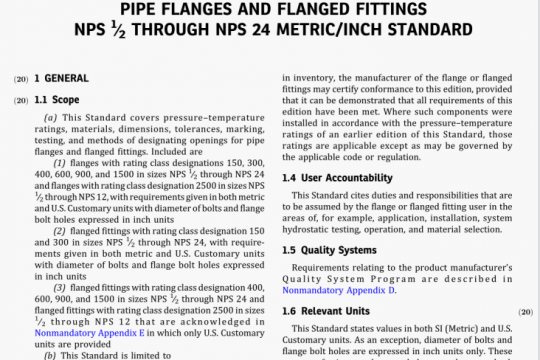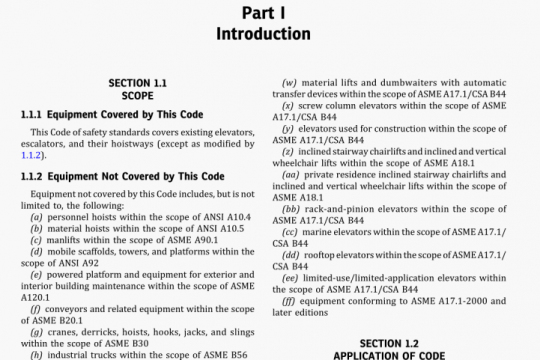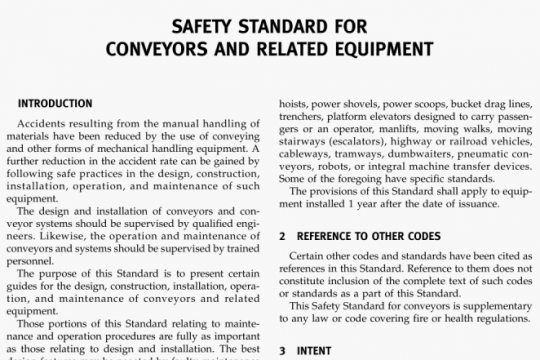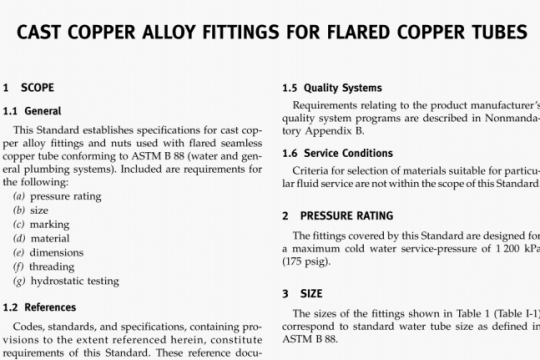ASME PCC-1-2010 pdf free
ASME PCC-1-2010 pdf free.Guidelines for Pressure Boundary Bolted Flange Joint Assembly.
Lubrication reduces the coffficient of friction and results in less required torque to achieve a given tension,improves the consistency of achieved load from bolt to bolt within the joint, and aids in the subsequent disas- sembly of the fasteners.
The reference torque values for new, coated bolts/nuts shown in Table 1M/ Table 1 do not consider lubrication other than that provided by the bolt/ nut coating [see Note (2) of Table 1M/Table 1]. When reusing coated bolts or if lubricant is applied to new or reused coated bolts, the Nut Factor will change and therefore the torque values should be adjusted accordingly (refer to Appendix K). Do not apply either approved lubricant or unapproved compounds to the gasket or gasket-contact surfaces; protect against inadvertent application to these surfaces.
(a) Ensure that the lubricant is chemically compatible with the bolt/ nut/ washer materials and the process fluid. Particular care should be taken to avoid lubricant chemistry that could contribute to stress corrosion cracking, galvanic corrosion, oxygen auto-ignition, etc.
(b) Ensure that the lubricant has proven to be suitable for the expected range of service temperature(s) and antiseize requirements.
(c) Before lubricant is applied to the bolt and nut threads, nuts must run freely by hand past where they will come to rest after tightening. If nuts will not turn freely by hand, check for cause and make necessary corrections/ replacements.
(d) For noncoated bolts (see Notes to Table 1M/Table 1), apply lubricant liberally and completely to the nut contact faces and to the threads on both ends of the bolts past where the nuts will come to rest after tightening; the lubricant should be applied after the bolts are inserted through the flange bolt holes to avoid possible contamination with solid particles that could create unwanted reaction torque.
(e) For new coated bolts and nuts (see Notes to Table 1M/Table 1), free running nut checks as described in (c) are required; however, lubricant application as described in (d) should be limited to the second and subsequent tightening operations since the coating provides sufficient lubrication for the first tightening.
(1) The reference torque values for new, coated bolts/nuts shown in Table 1M/Table 1 do not consider lubrication other than that provided by the bolt/nut coating [see Note (2) of Table 1M/ Table 1]. When reusing coated bolts or if lubricant is applied to new or reused coated bolts, the Nut Factor will change and therefore the torque values should be adjusted accordingly (refer to Appendix K).
(f) While it is recognized that the inherent lubricity of new coated bolts results in less torque being required during the first tightening operation to achieve a given level of tension in the bolt (see Table 1M/Table 1), the major long-term value of coated bolts is to protect against corrosion of the exposed threads and to minimize break-out and nut-removal torque, thereby promoting ease of joint disassembly [see section 15, and Note (3) of Table 1M/Table 1]
(8) Do not apply either approved lubricant or unapproved compounds to the gasket or gasket-contact surfaces; protect against inadvertent application to these surfaces.ASME PCC-1 pdf free download.




